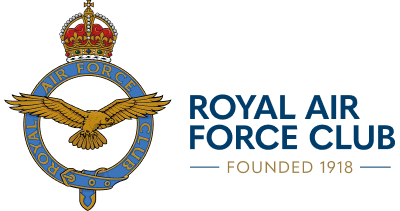Club History: A Century Past
Friday 18th May 2018
Longstanding member, Club Trustee and Chairman of the Arts Committee, Wg Cdr Michael Gilbert co-authored the definitive account of the Club’s history ‘128’ The Story of the Royal Air Force Club in 2004. Michael was, therefore, the obvious choice to pen a historical account of the Club from a modern perspective. Read on, step back in time to when the Club first opened its doors to members and visualise a very different ‘128’.
Today’s New Members are offered a tour of the Club which will reveal its excellent facilities and its pervading Royal Air Force ethos. A similar tour of the 1920s Club would give a fascinating insight into a century of social change and the present Club’s success in meeting those changes.
On entering from Piccadilly he – for only men could use this entrance – would know that here was a traditional London Club with an uncompromising masculine ambience. Ahead, the Main Corridor was adorned with elephant tusks and nine assorted big game heads. To his right the Smoking Room (Dining Room) supplied with newspapers, its leather seating, mahogany tables and nineteen brass ashtrays catered for masculine ease lubricated by suitable liquor served by waiters summoned by eighteen easily located bell pushes. There was of course not an aeroplane in sight, but the King and Lord Cowdray were complemented by thirteen heads of big game.
Younger members’ needs were accommodated by the provision of an American Bar (Cloakroom) – much in vogue in ‘20s London. So successful was it that in 1928 the decision was taken to close it at 8.30pm “as it was the root cause of increasing numbers of members being intoxicated.”
Opposite it were two more staples of London Club land: the Billiard Room (Churchill Bar) and Card Room (Library). Both were open to members staying at the Club, until 4.30am and as a consequence were the source of frequent complaints of rowdy behaviour, observed by a total of thirty stuffed heads and a tarpon. To reach the First Floor, Members retraced their steps to the Main Staircase leading directly to the Dining Room (Cowdray Room) and Small Dining Room (Hodges Room). All was mahogany and dark blue leather, but at least diners were not overseen by dead heads. Through the inter-war years attempts to achieve an all-male waiting staff failed, so the Committee had frequent occasions to ascribe the “appalling service” to the “lack of intelligence among the waitresses.”
The West end of the Dining Room was screened off, and was reserved for ladies being entertained by their hosts. Uniquely among London Clubs, ladies were permitted on the premises, but under strictly regulated conditions. Entry was via the Old Park Lane entrance, otherwise the preserve of tradesmen and rubbish, and they were provided with a small room to await their host. When collected, they gained access to their area via the Back Stairs. Under no circumstances were they to use the Ground Floor Corridor or Main Staircase for, as a member later remarked “no gentleman wished to be assailed by ladies’ perfume when using the stairs”. On the First Floor things had not gone precisely to plan which had designated the now Presidents’ Room as the Ladies’ Lounge, with the associated Ante- Room and Bar. However, Lady Cowdray had insisted on the Ballroom for the use of the ladies and had furnished it appropriately with much chintz and Chinese vases. A shocked Committee did however manage to see off her proposal to hold regular ‘Thés Dansants’ as “a somewhat novel departure for a Service Club.” Ladies had to leave the Club by 10pm.
Should the member have booked a room, he would be accommodated in a room containing a three foot wide bed, a wardrobe, dressing table, washing facilities – and the necessary chamber pot, as there was but one bathroom for three bedrooms. There was no central heating on the bedroom floors, but electric heaters could be hired in winter.
Clearly the Club now is a very different place, but a study of its history shows how close it came to disaster resulting from the failure of successive committees in its first forty years of existence to adapt to the changing times.
With thanks to Wg Cdr Michael Gilbert – Trustee & Art Committee Chairman
